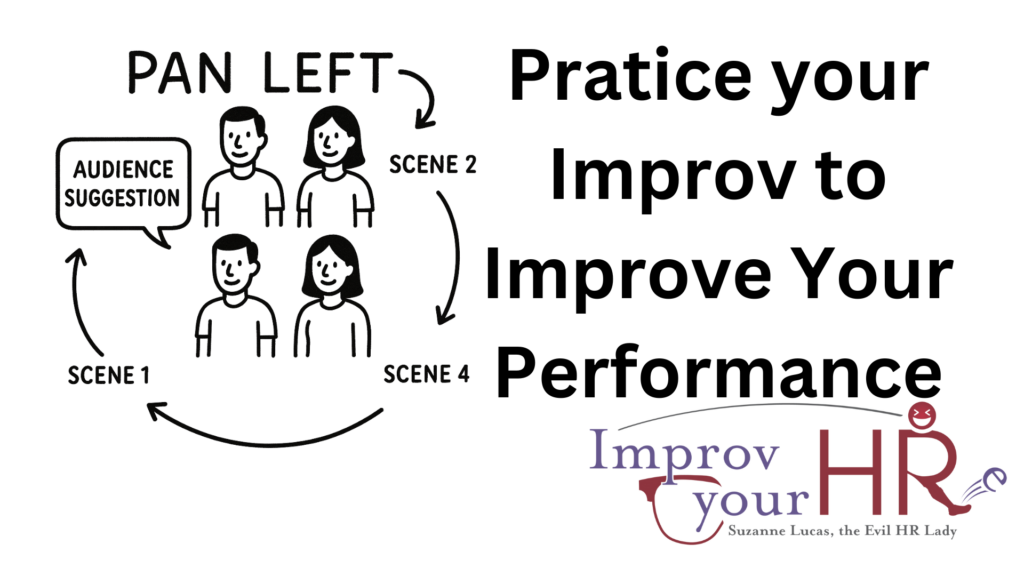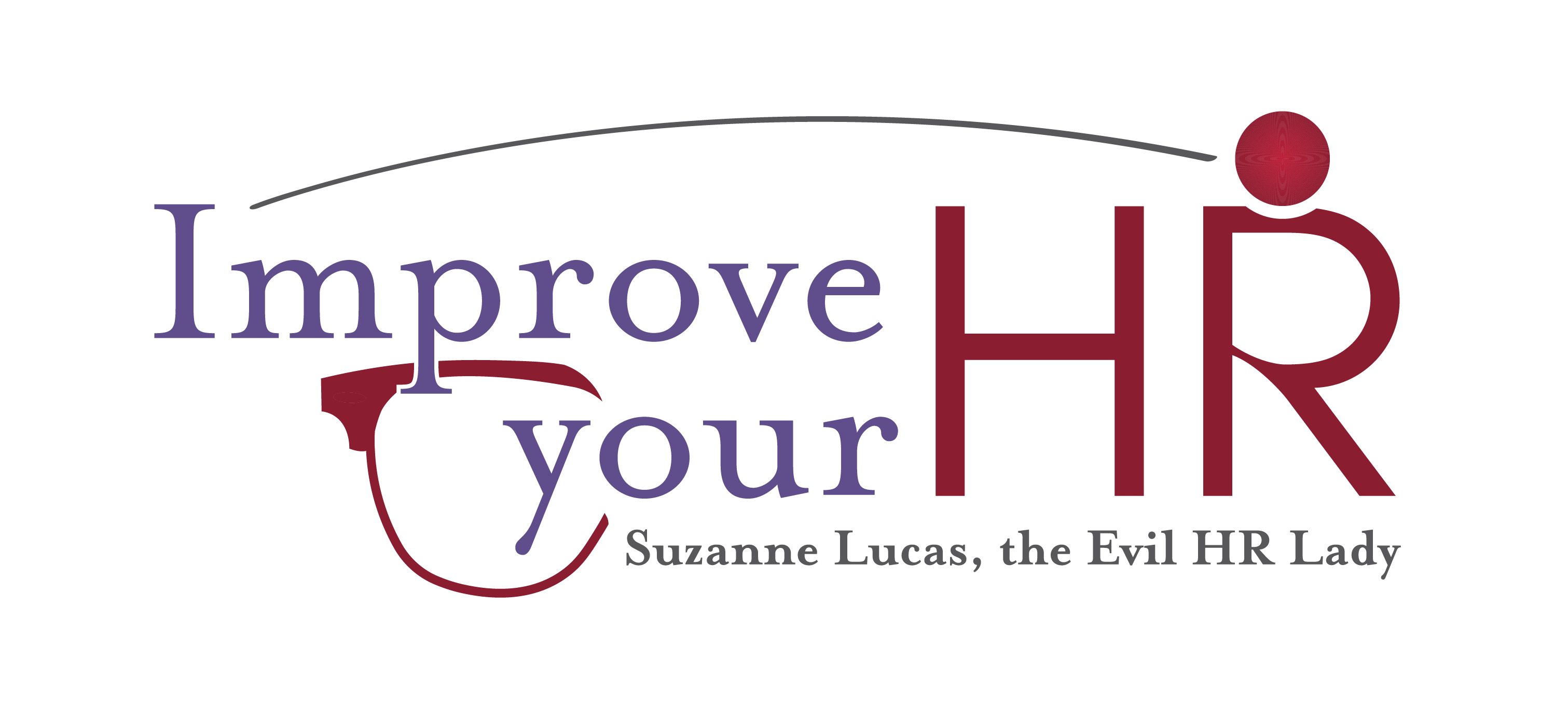
Every once in a while, we hold what we call “Pop Up” improv shows. These are 45-minute free shows in the basement of a local bar (Valhalla at 7:30 on April 24, 2025, for those of you who live in Basel). We practice new material in these shows before we put it into our paid shows. We want to work out the problems, and as improv is a performing art, it helps to have an audience.
We also reserve about 10 minutes of this show for our students to come and do an improv game. Anyone who has taken a class at Boutique Theatre Basel from me, Jennifer Cain Birkmose or Carrie Aikman is welcome to come up on stage and do a “Pan Left” or “Numbers”*
We believe that performing arts require a chance to perform. Nothing is more exciting than seeing students grow as they move from classroom to stage. It’s spectacular.
For an upcoming performance, I told the students that they would need to commit to two practices before the performance. And one asked me, “Why do we need to practice if it’s improv? Don’t we just make it up on the spot?”
Here’s why
Improv isn’t about just standing up on a stage and saying stuff. Anyone can do that. But improv comedy, done right, requires you to build skill and after skill. The better you know your ensemble the better your performance will be. And all that takes practice.
We don’t focus all our practice time on the performance pieces. We focus on the skills that make up the performance pieces. Let me describe the performance pieces and the skills we will build in practices.
Pan Left: This is a four-person game. The participants stand in a square, facing the audience: Two people in the front, two in the back. The audience gives a suggestion for a scene with the first two people, for example
- A career both people share
- A relationship between the people
- A hobby they picked up during COVID
- A line in a song
- A word that feels good in your mouth
- A street name
Then the director says, “Pan left,” and everyone rotates one position. The audience then gives a second suggestion for a scene with the two people in front. This is repeated until there are four scenes set up. Each scene is independent, and every participant appears in two scenes with two separate characters.

To learn more about Workable, click here: Workable
Each side of the square plays part of a scene, ending when the director says, “Pan left.” The new scene begins.
In our basic format, there are three rotations. In the first rotation, you establish the who, what, where, and why. In the second, you heighten the situation. In the third, you resolve the issue.
As you get more skilled, there may be additional skills added in.
Numbers: This is a three-person scene. Each person is assigned a number, ideally one low number (1-3), a medium number (5-9), and a large number (15-20). When each person speaks, they must use their allotted number of words.
We ask the audience questions designed to elicit responses in that range to get the number. For example, I might ask,
For low numbers
- How many siblings do you have?
- How many times did you accidentally text the wrong person this week?
For medium numbers
- How many colors of lipstick do you own? (This sometimes backfires and I get an answer like 30)
- How many unread books are sitting on your shelf right now, silently judging you?
For high numbers
- How old were you when you got your driver’s license?
- How many different passwords do you have floating around in your brain?
- How many times have you hit snooze on your alarm this week?
With these two games in mind, we’ll practice skills and the actual games.
The skills we’ll practice
- Establishing the who, what where, and why in a scene
- Making everything bigger. Either more exciting or more terrible! It doesn’t matter–escalate
- Making bold choices
- Establishing hierarchy
- Character building
- Observing and responding to ensemble members.
How on earth does this matter to my business?
Selling isn’t one skill. It’s a whole bunch of little skills you can build.
Resolving employee conflicts isn’t one skill. It’s a whole bunch of little skills you can build.
Presenting isn’t one skill. It’s a whole bunch of little skills you can build
I can continue this pattern all day. Building core skills helps us do our jobs. We fail in front of a live audience when we neglect those core skills. Now, failing with joy is also a necessary skills, but if we fail too often at work, our paychecks tend to suffer.

This blog really hits home because it shows how improv skills aren’t just great for performing they’re also super relevant for everyday life and work. It’s all about breaking things down into smaller, manageable pieces, practicing them, and putting it all together when it counts. As an HR Clerk, I see this play out all the time. Whether I’m meeting new hires for paperwork, sitting in on interviews, or talking to employees about their performance, it’s not just one big skill it’s a bunch of little ones that add up.
Take new hire meetings, for example. It’s not just about getting the paperwork done; it’s about connecting with people, making them feel welcome, and setting the right tone for their experience. Then there’s interviewing—asking good questions, reading the vibe, and staying flexible in the moment really matters. And when it comes to performance discussions, it’s all about balancing honesty with encouragement, listening as much as talking, and making sure people walk away feeling supported and motivated to grow.
This blog reminds me that the best way to get better at all of this is through practice. Just like improv performers sharpen their skills in games like “Pan Left” and “Numbers,” I need to refine mine by staying present, observing people, and adapting to their needs. It’s cool to think about how every interaction, no matter how small, builds toward something bigger whether it’s a successful show or a thriving workplace. And honestly, the idea of failing with joy feels pretty liberating. It’s a good reminder that perfection isn’t the goal it’s growth. Loved reading this!